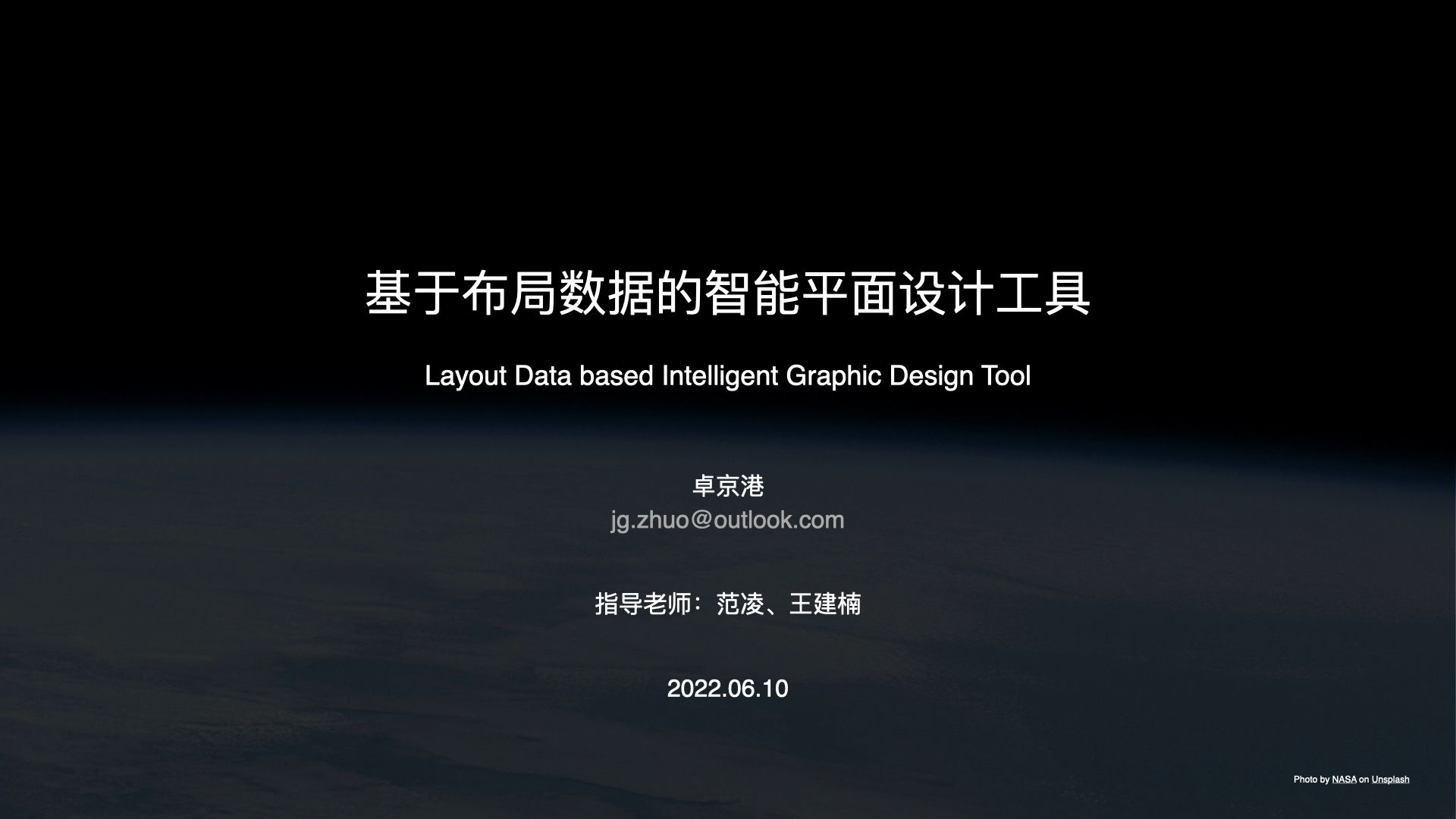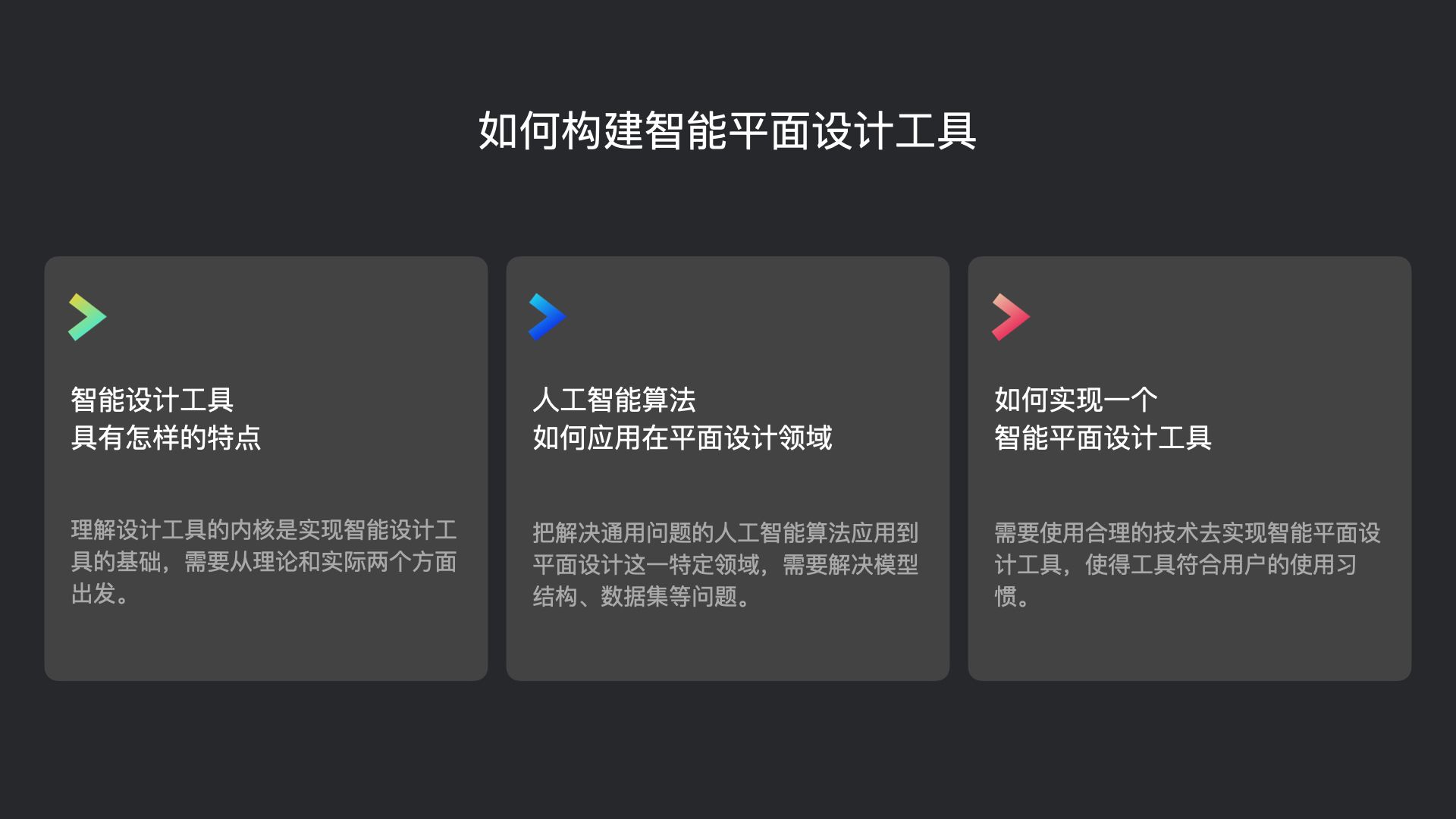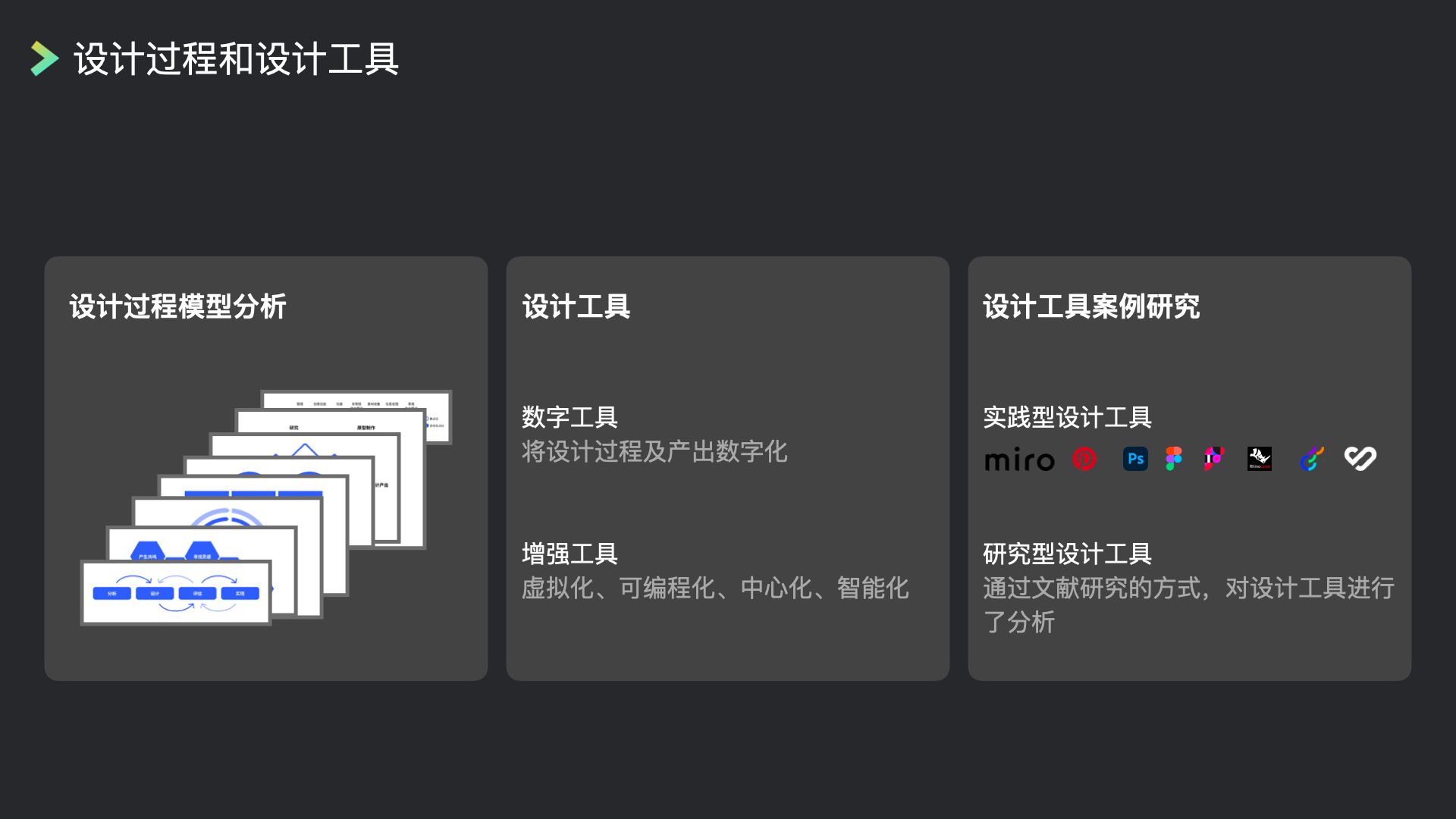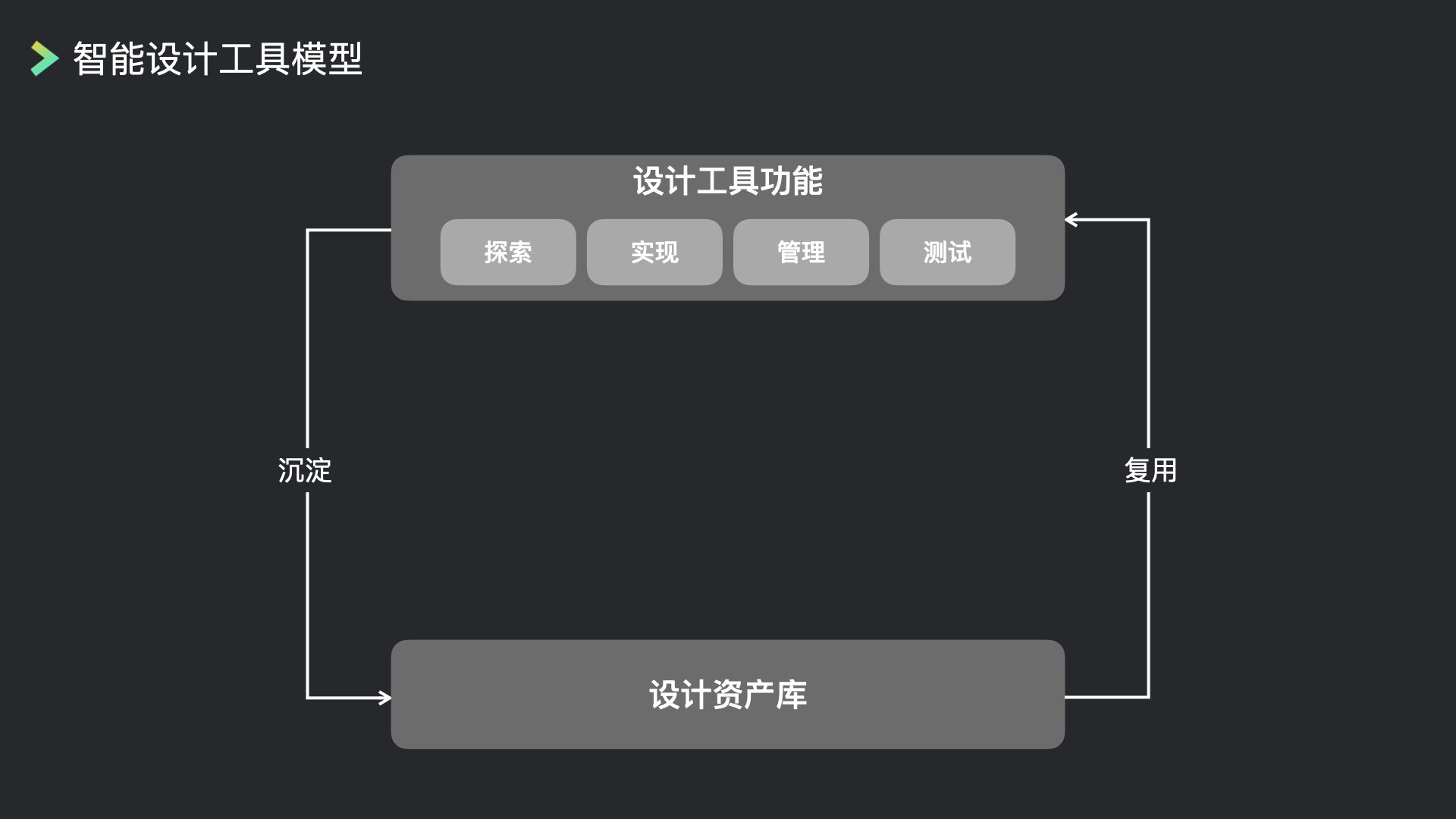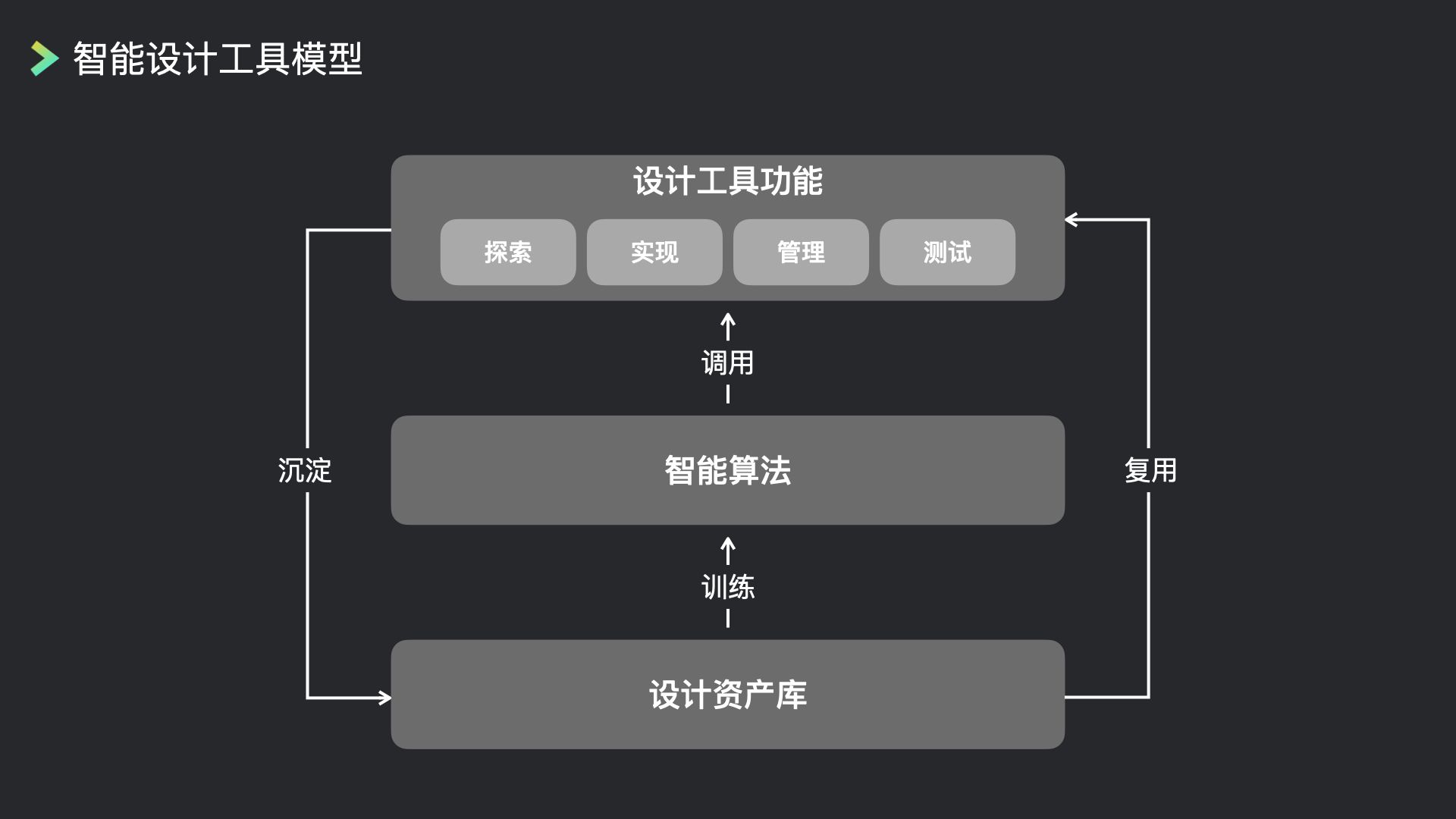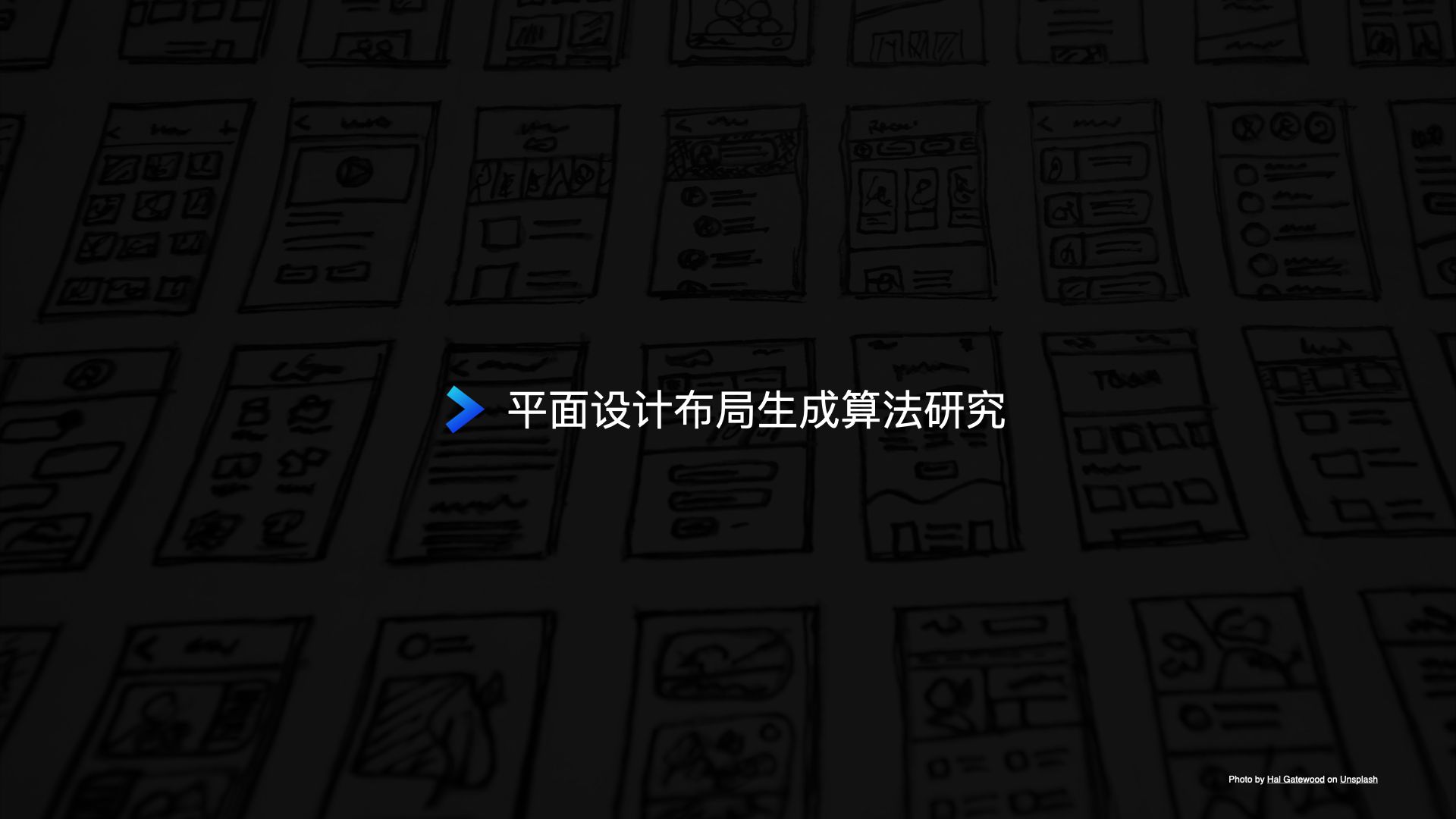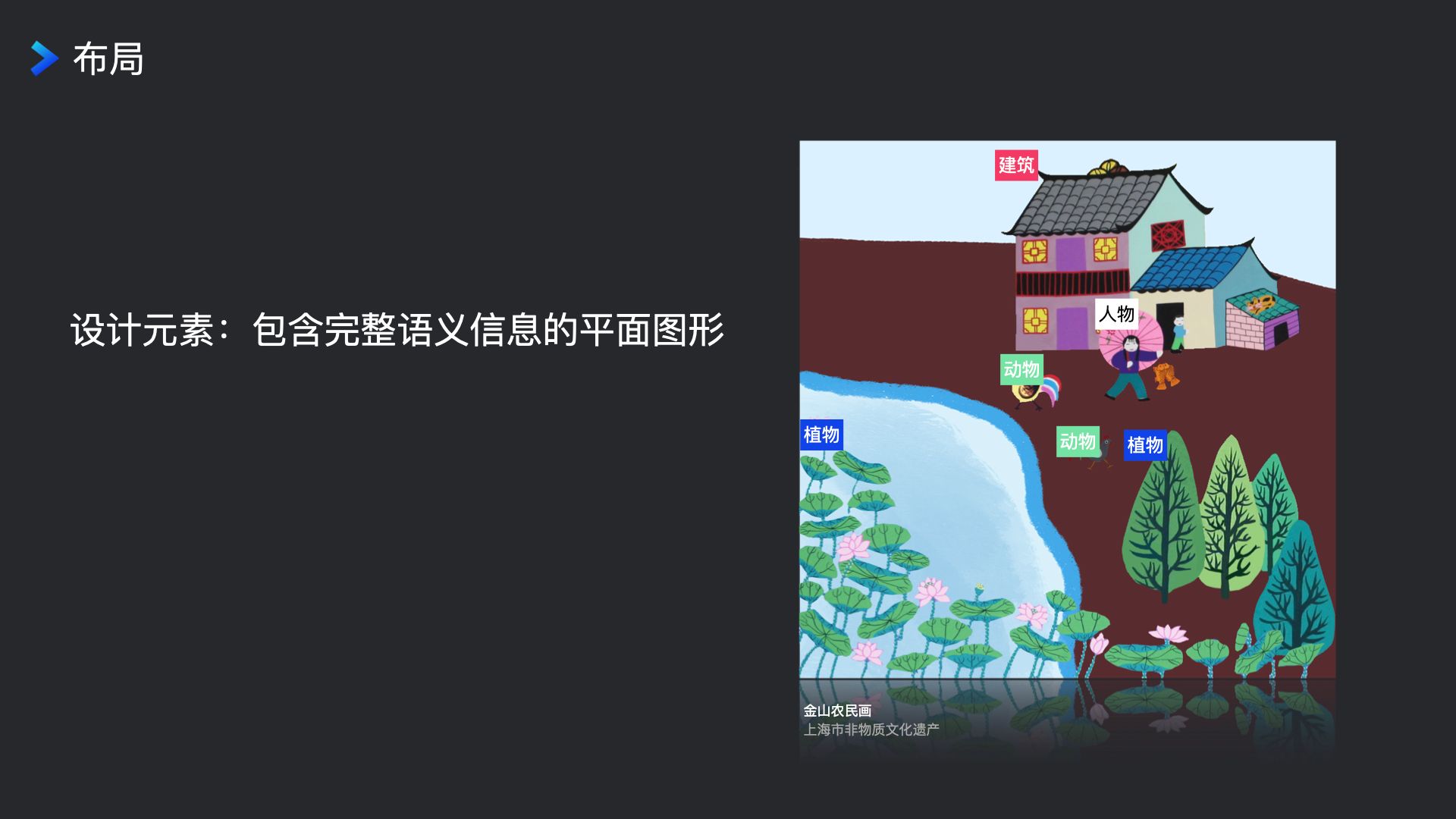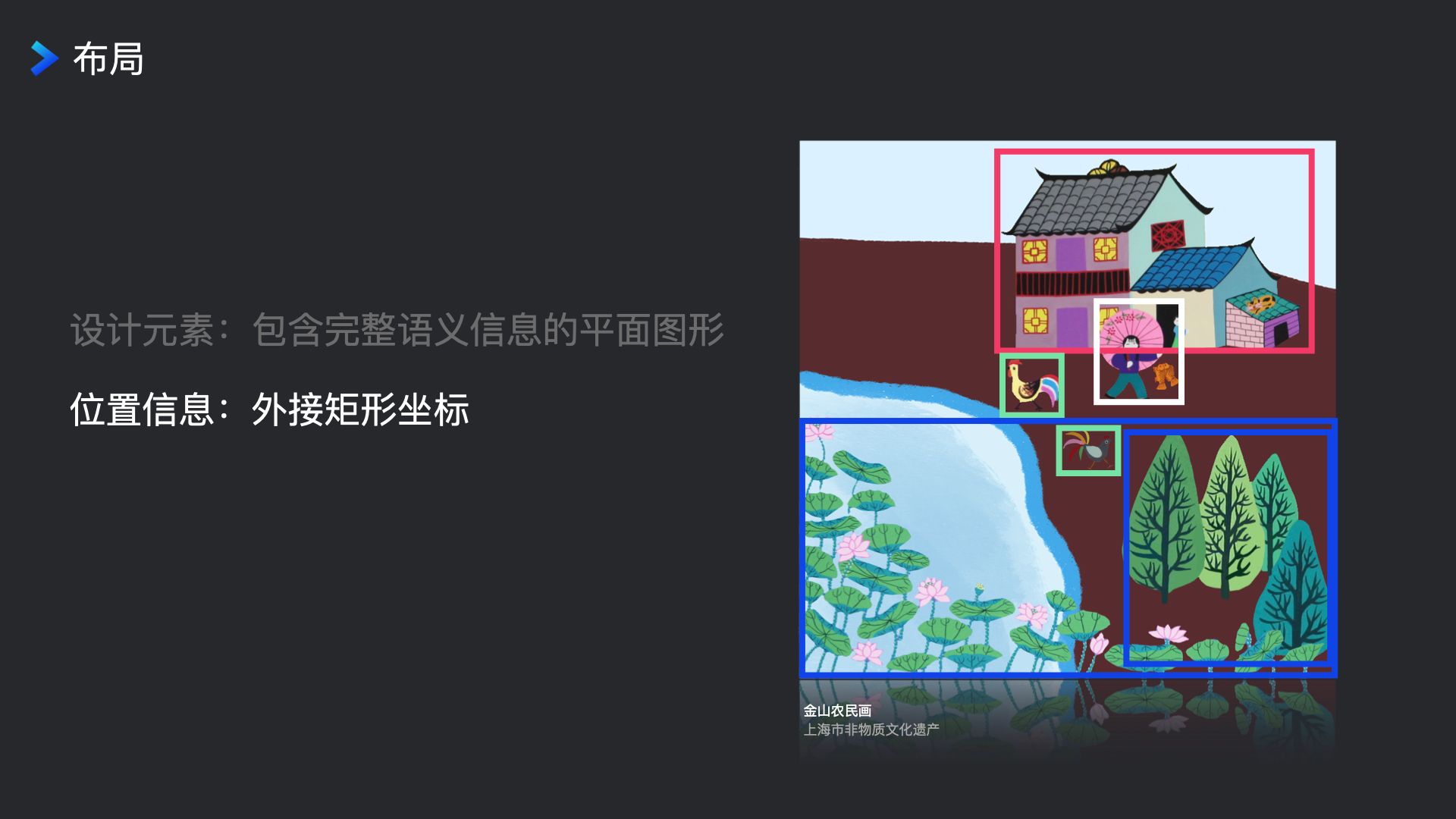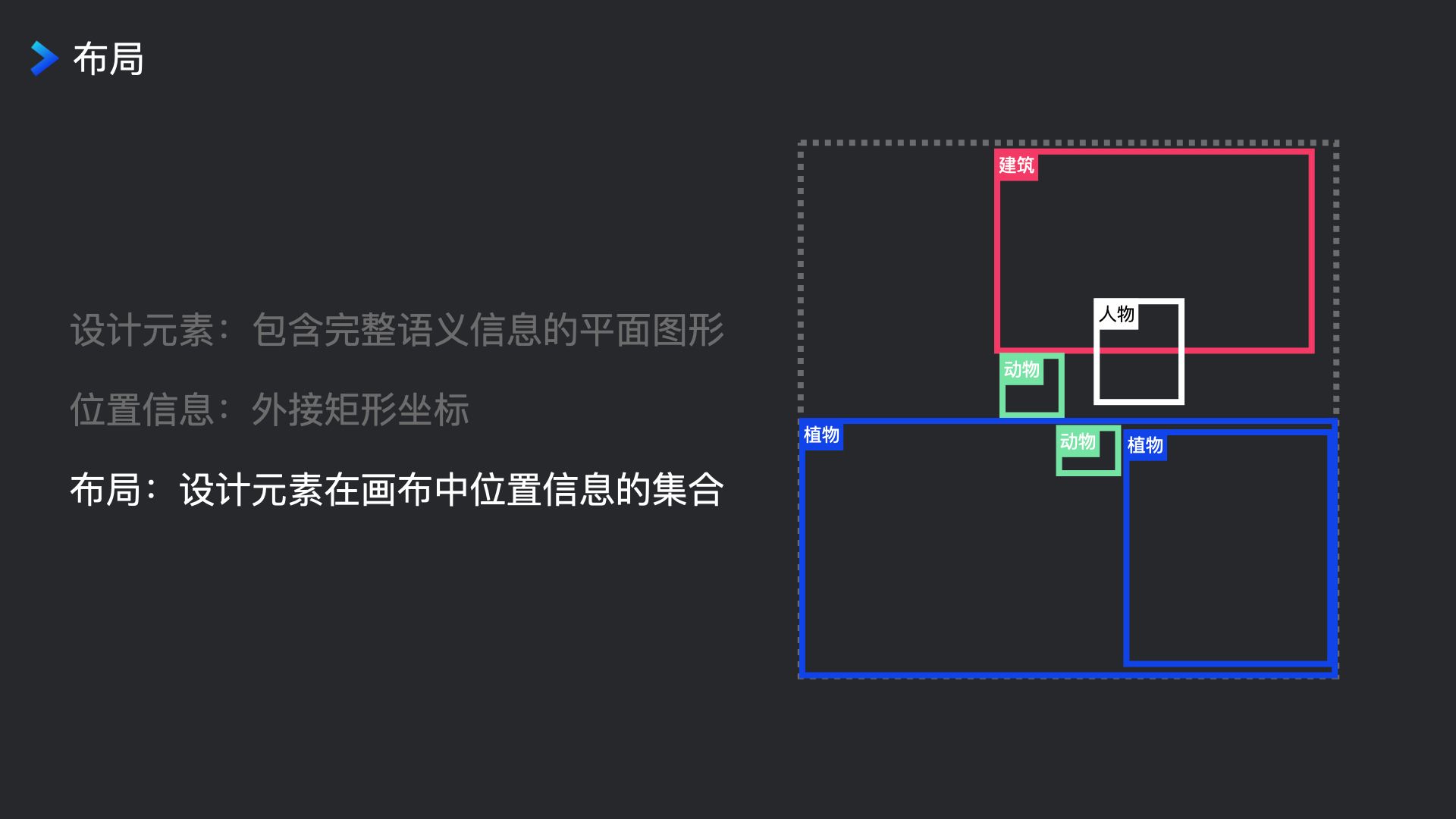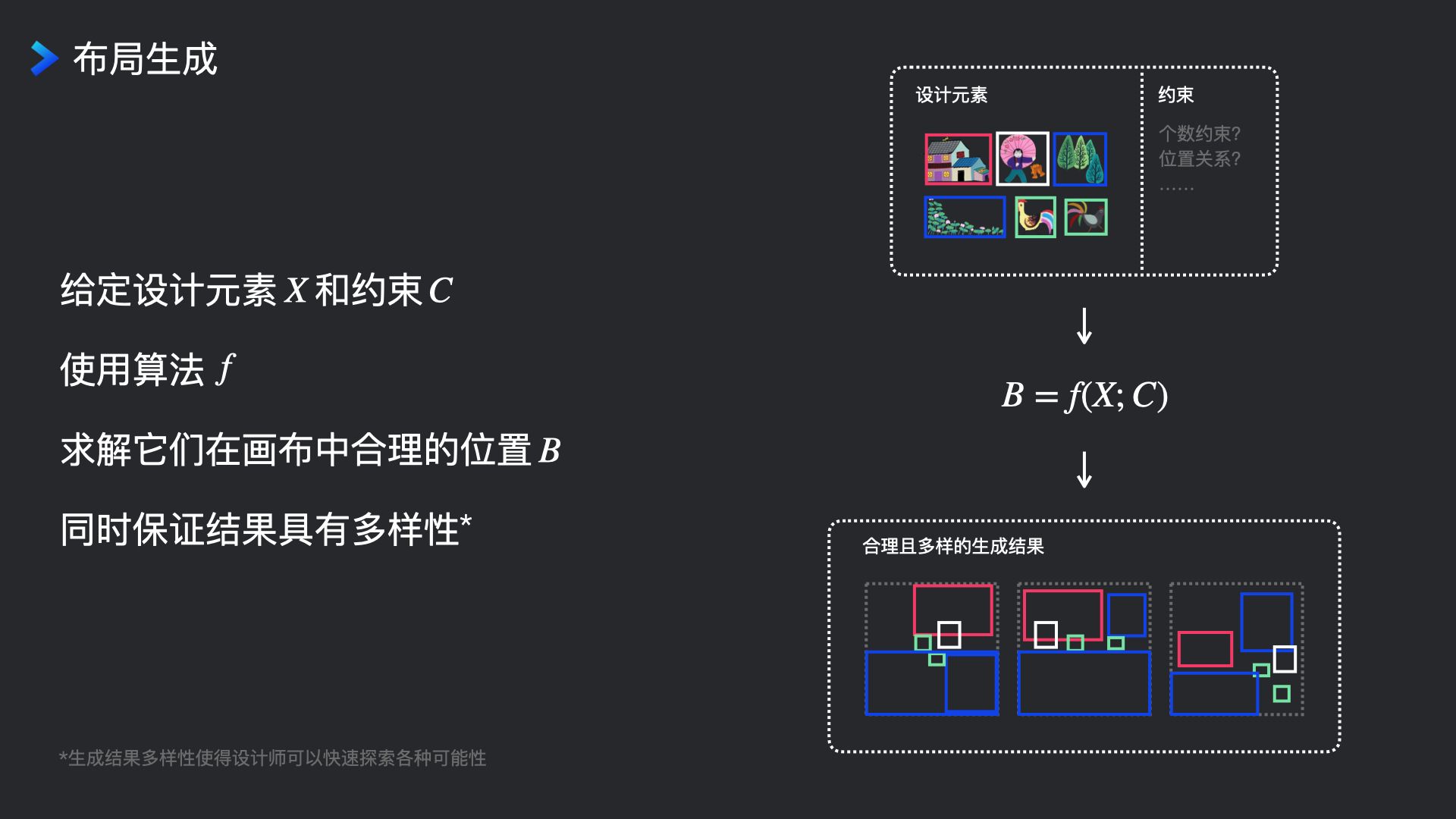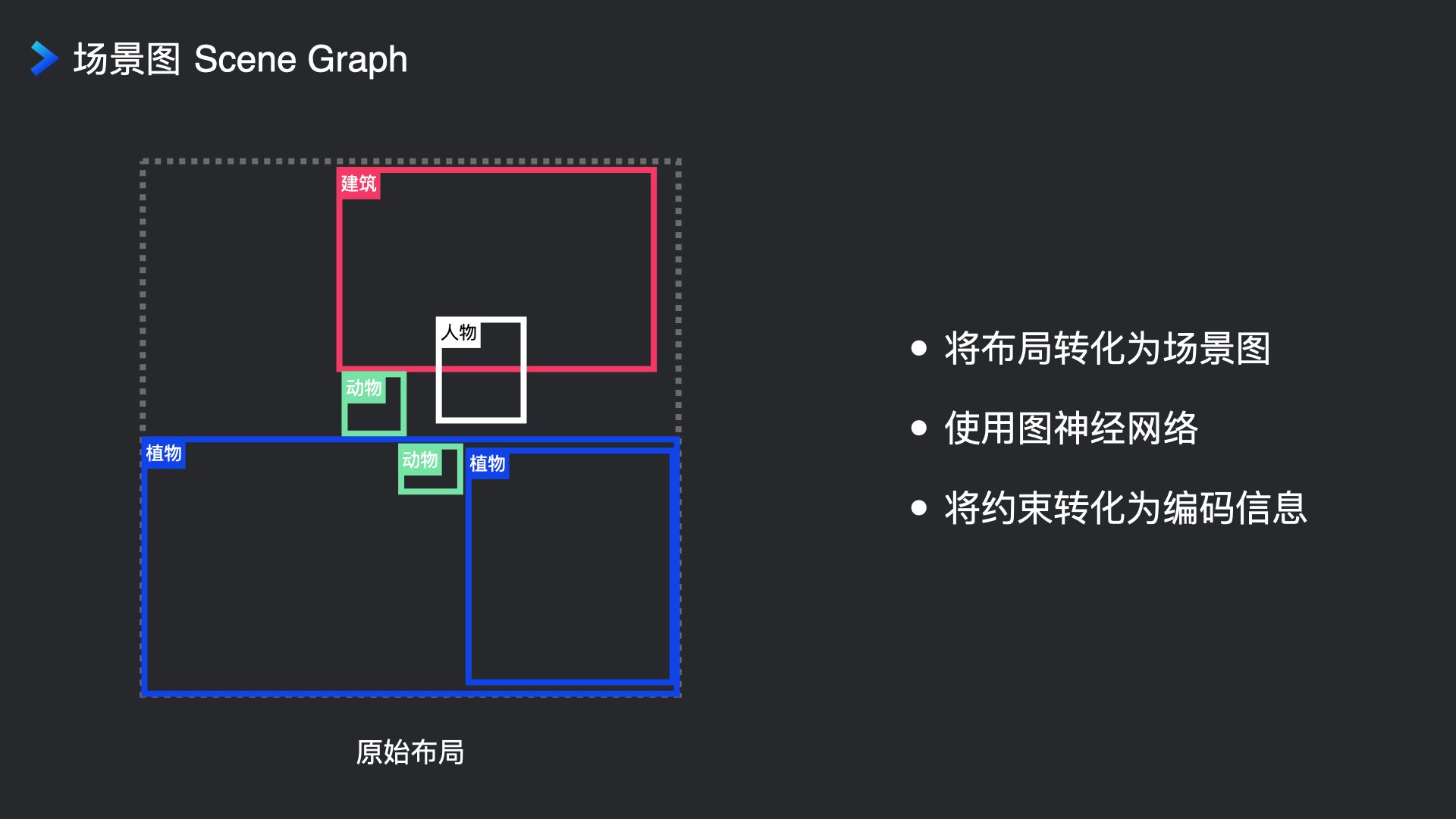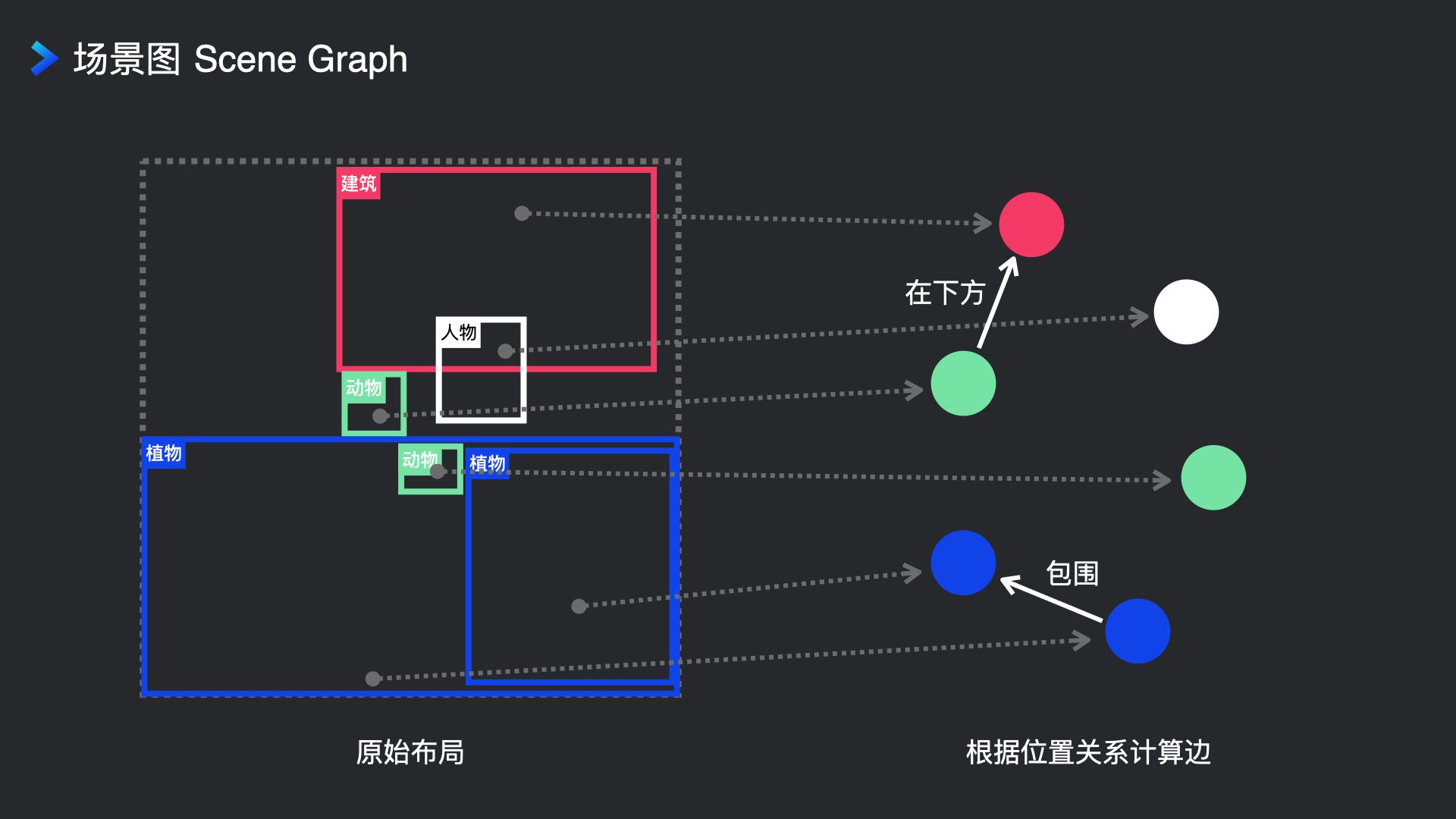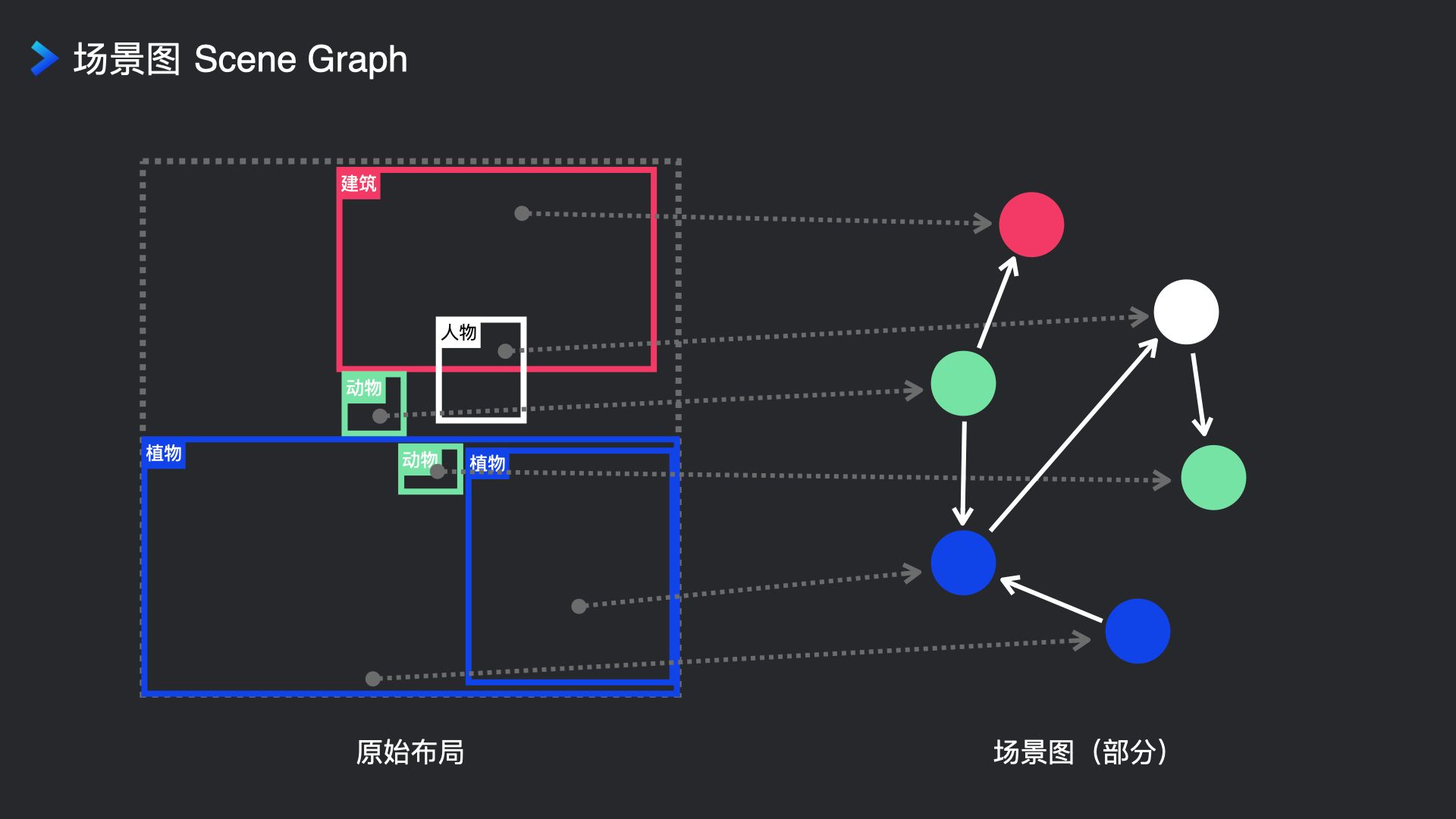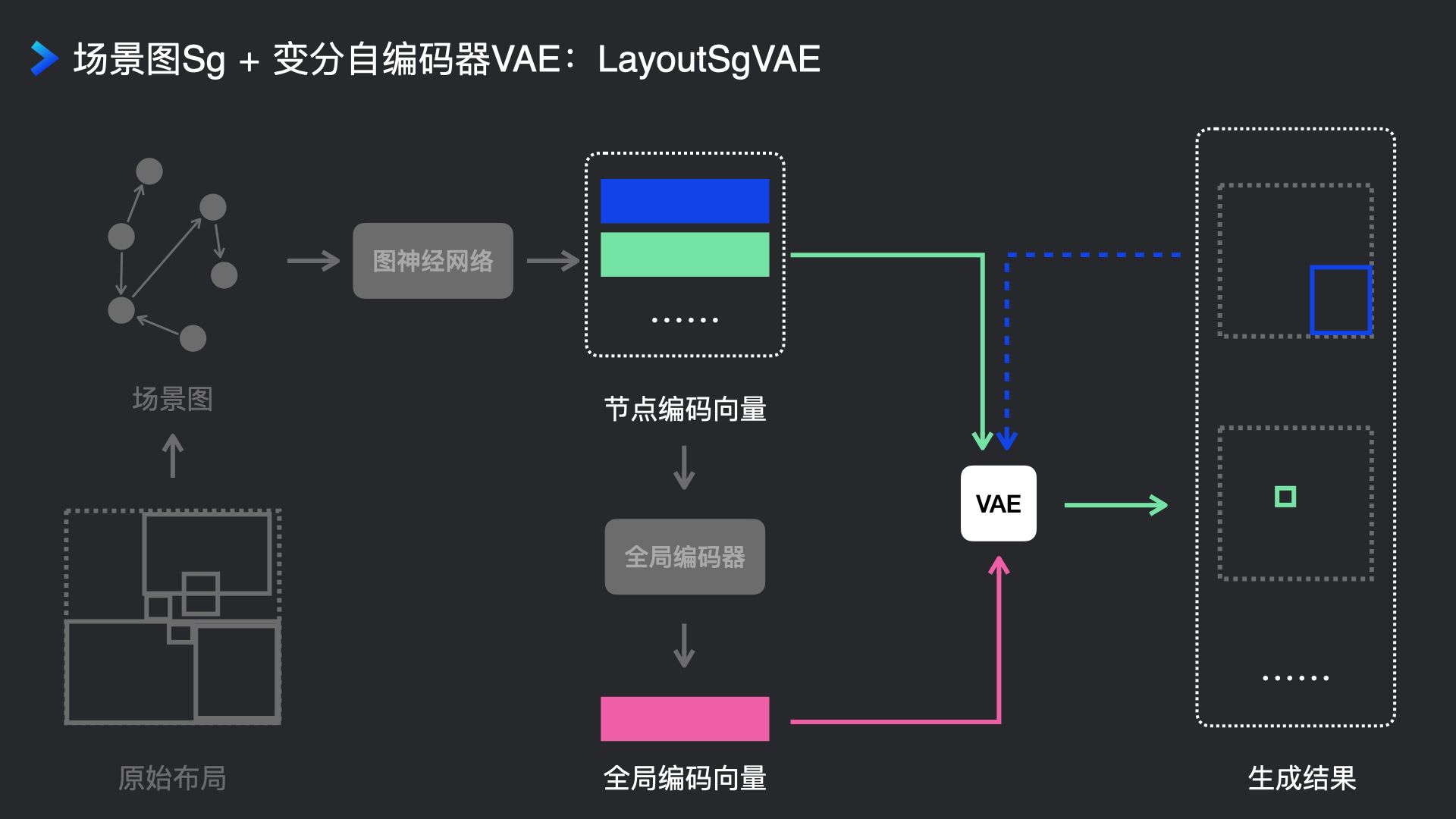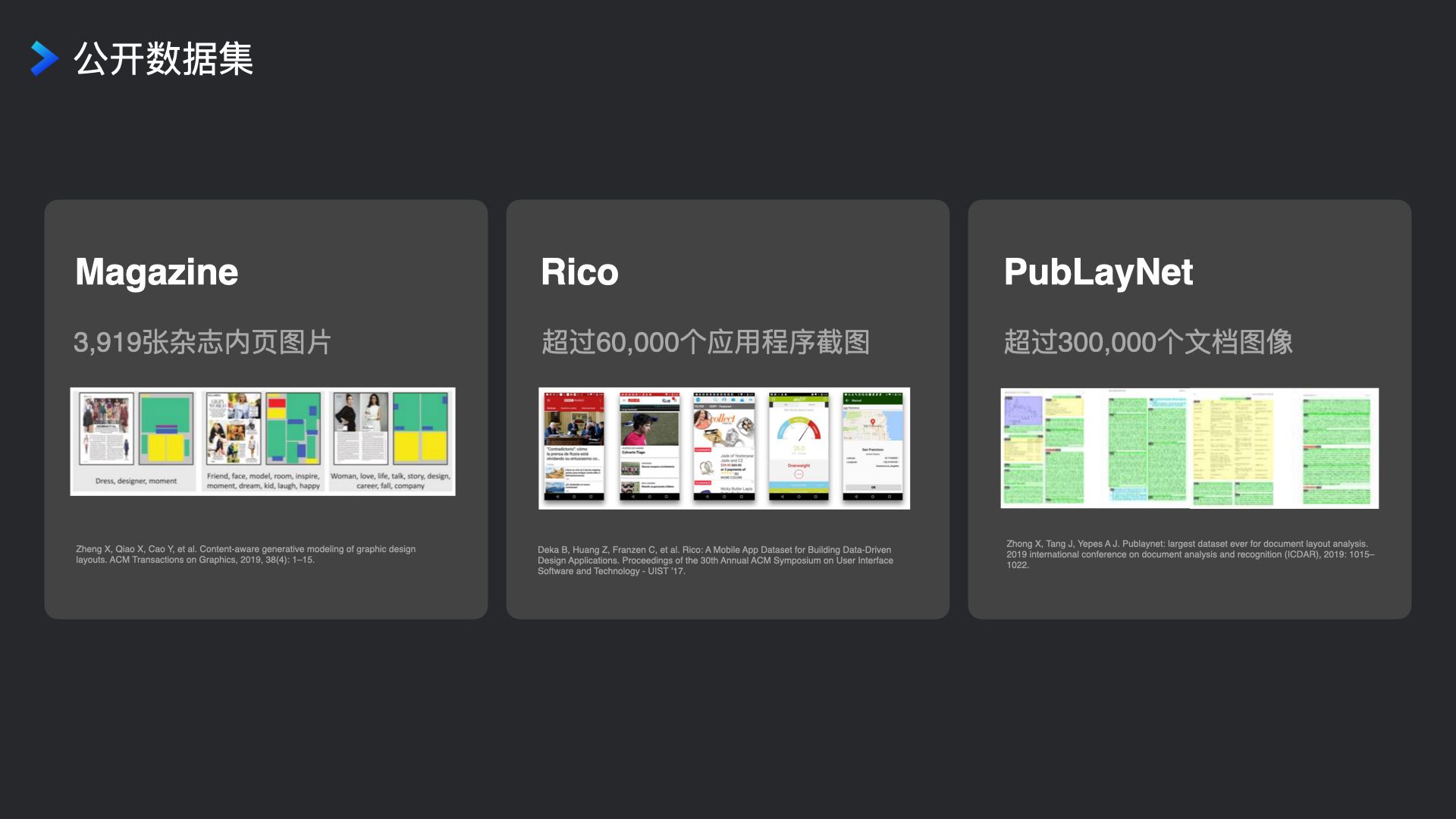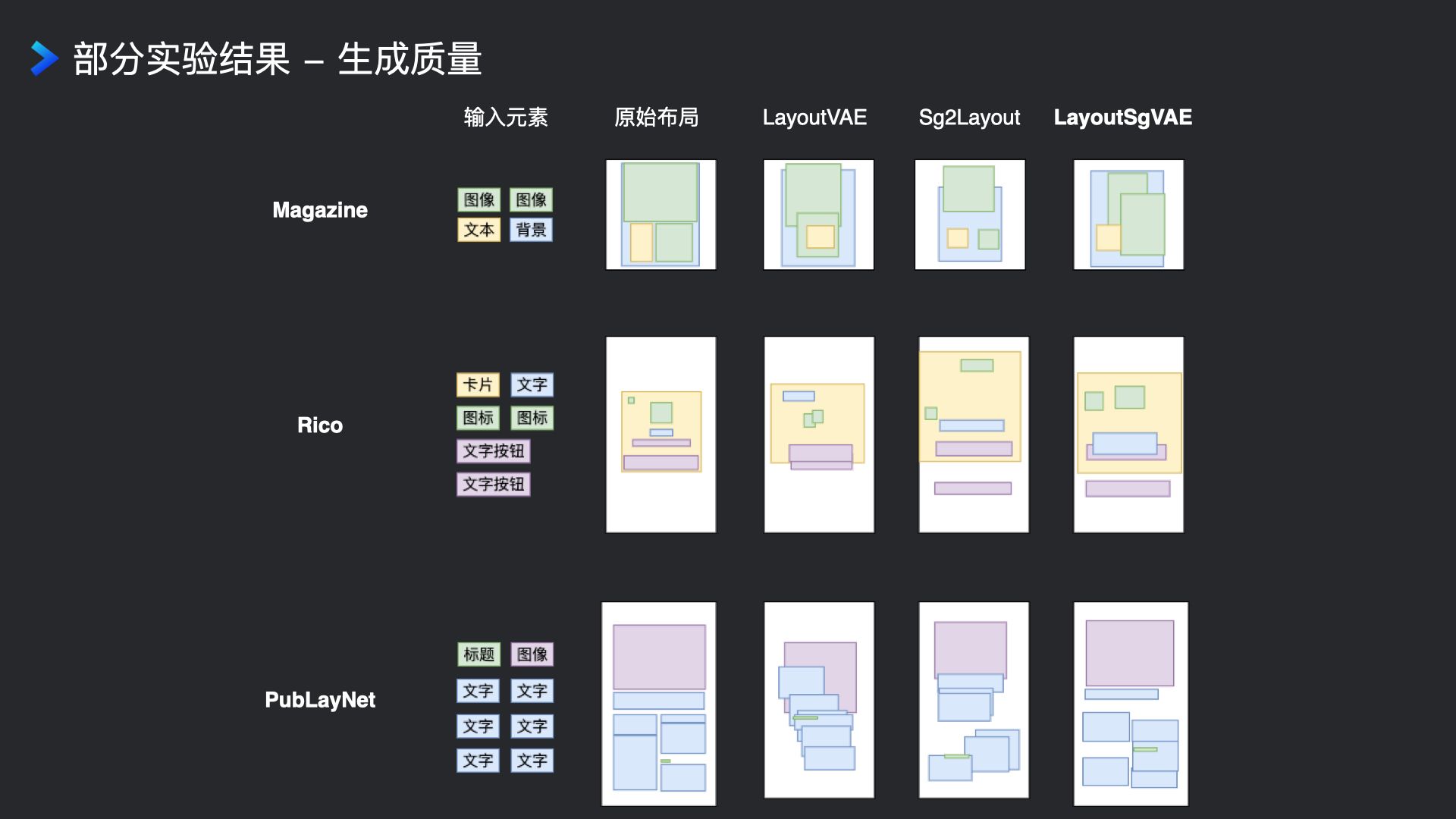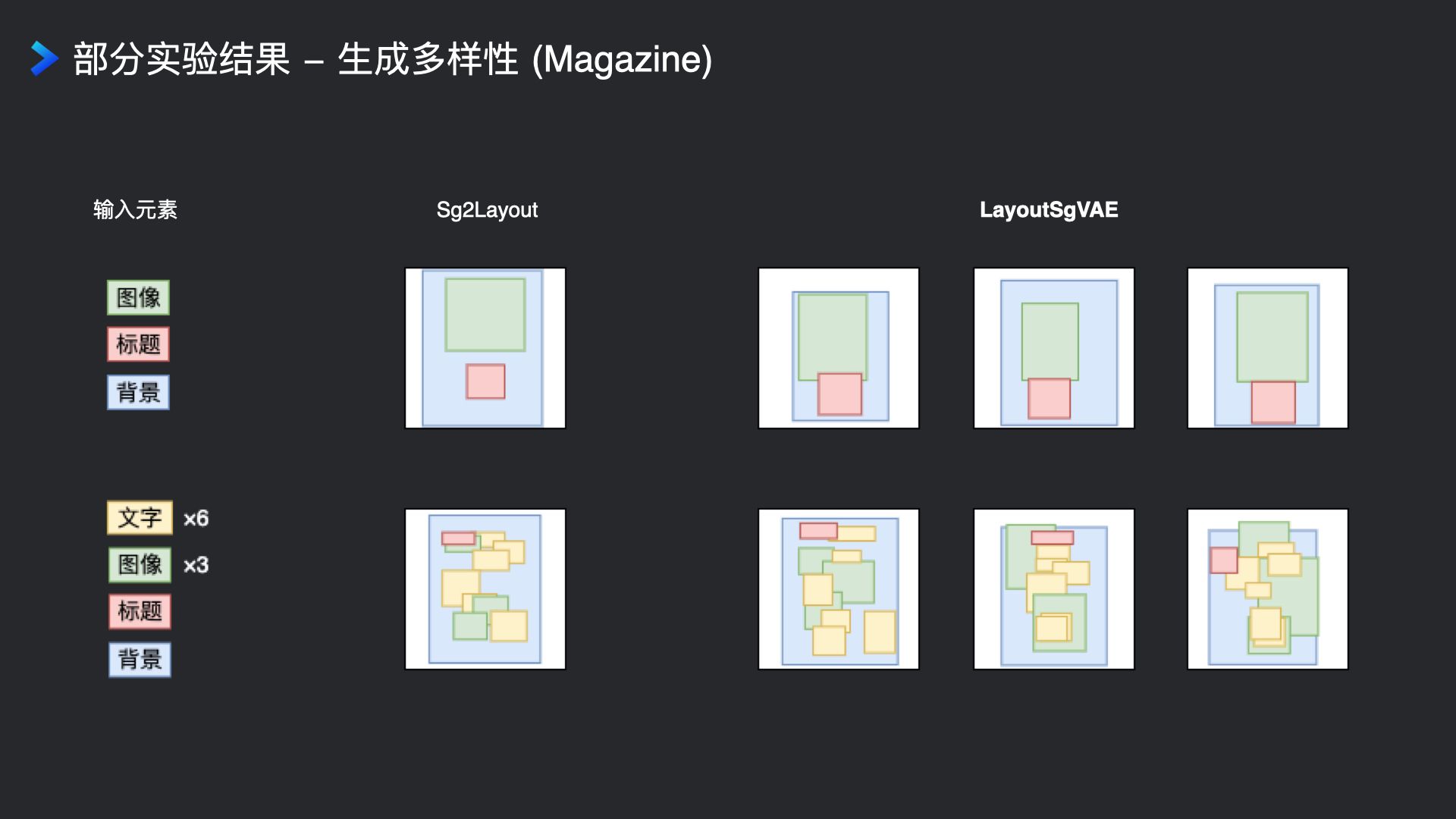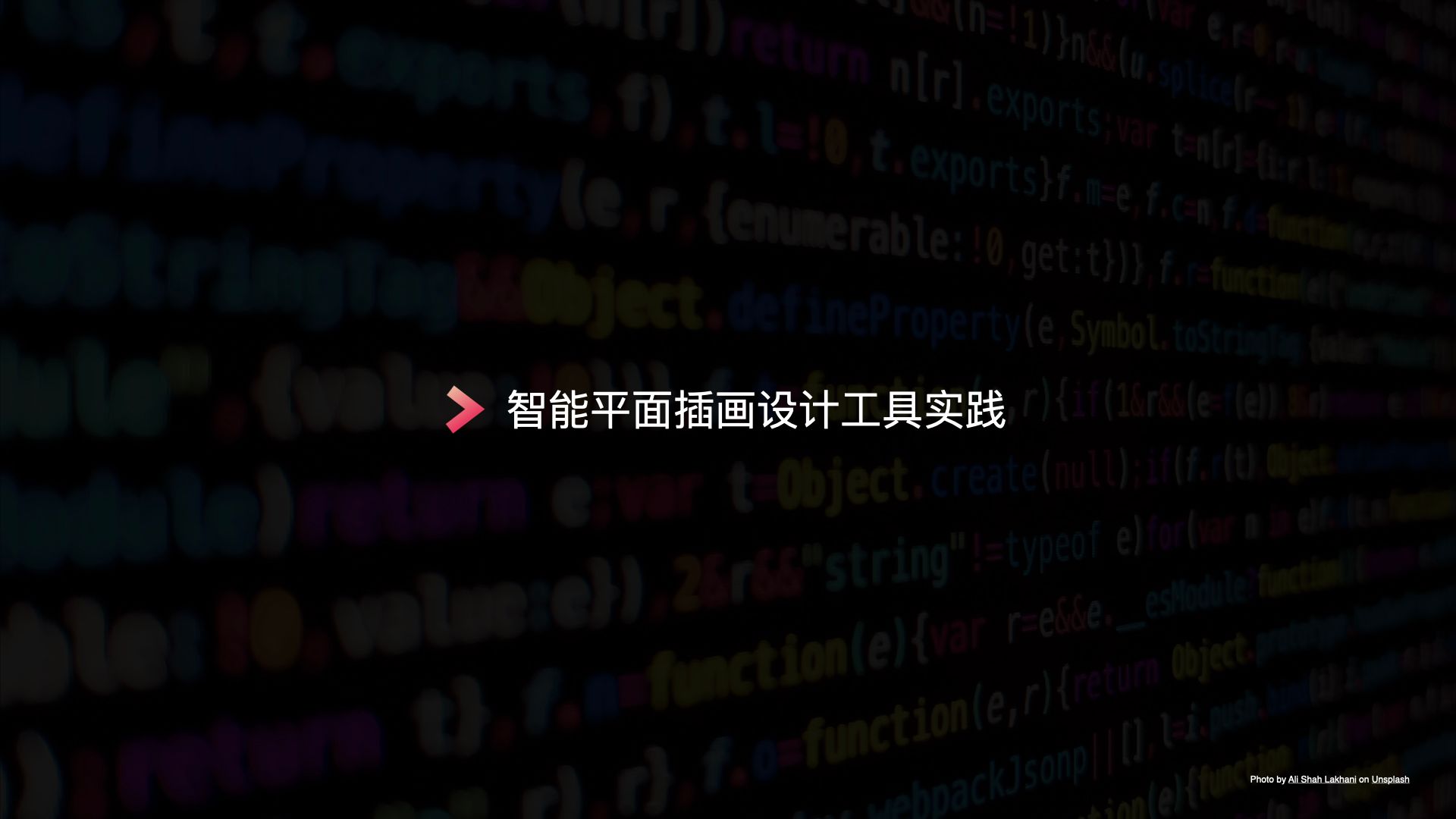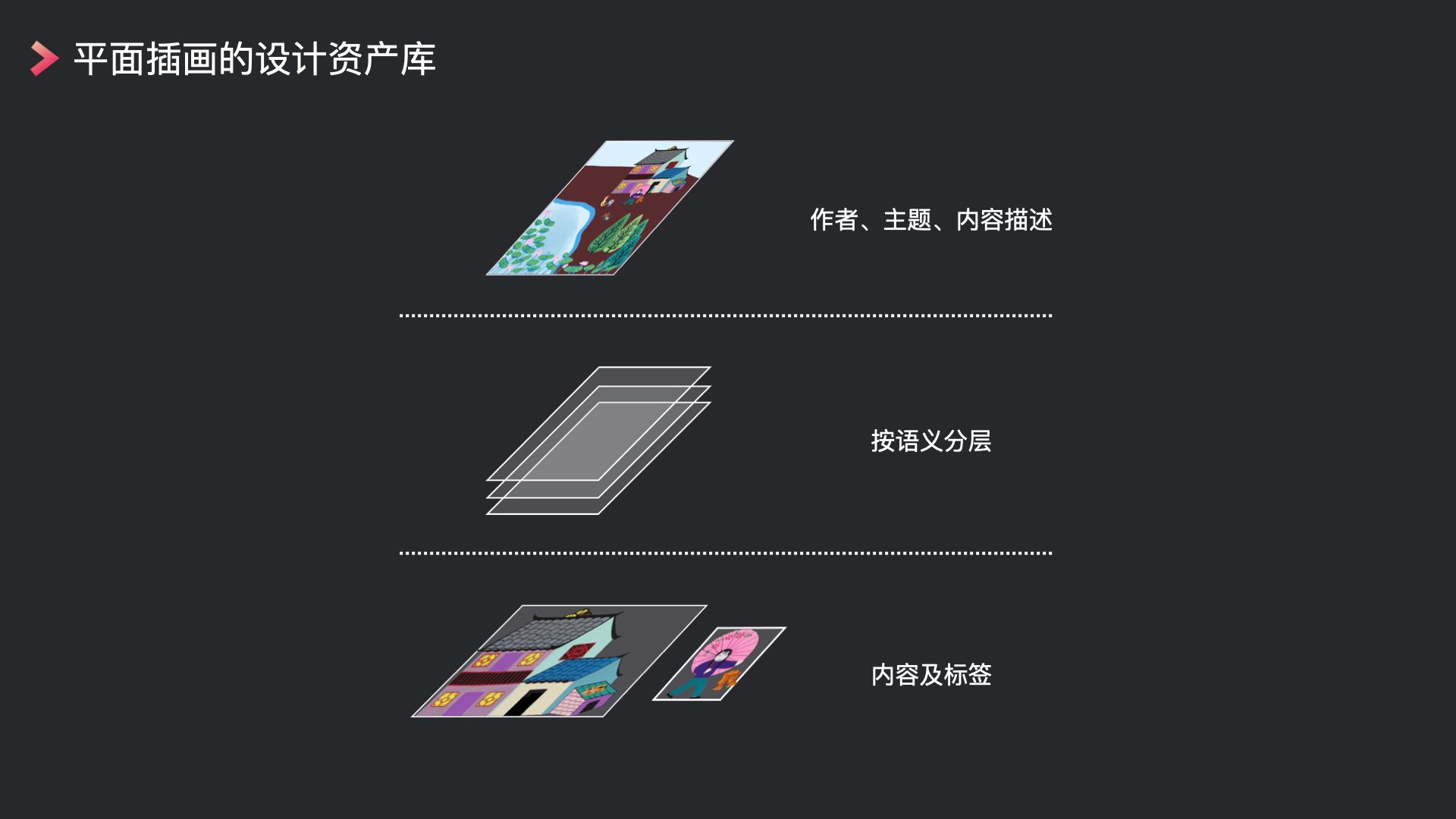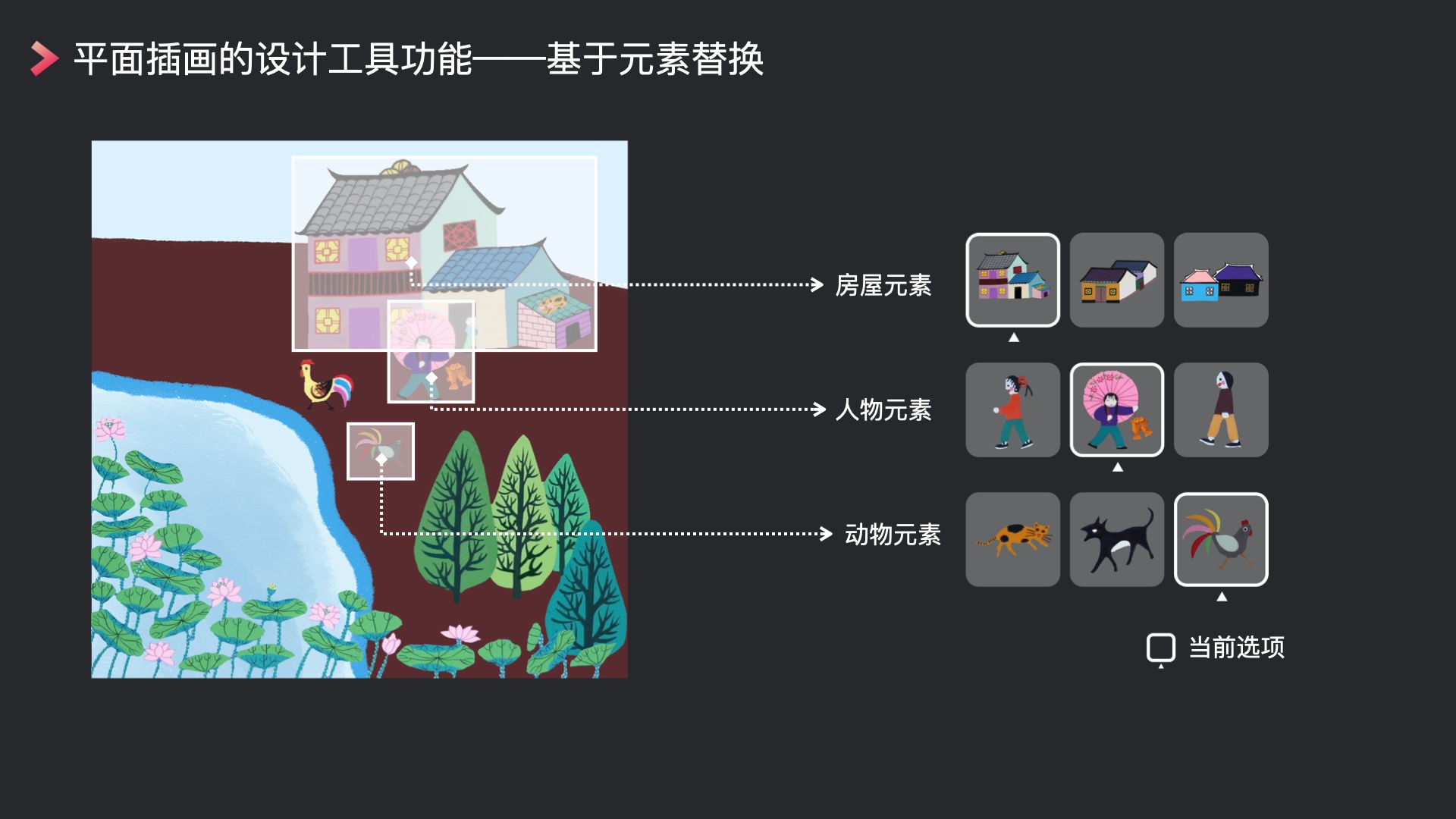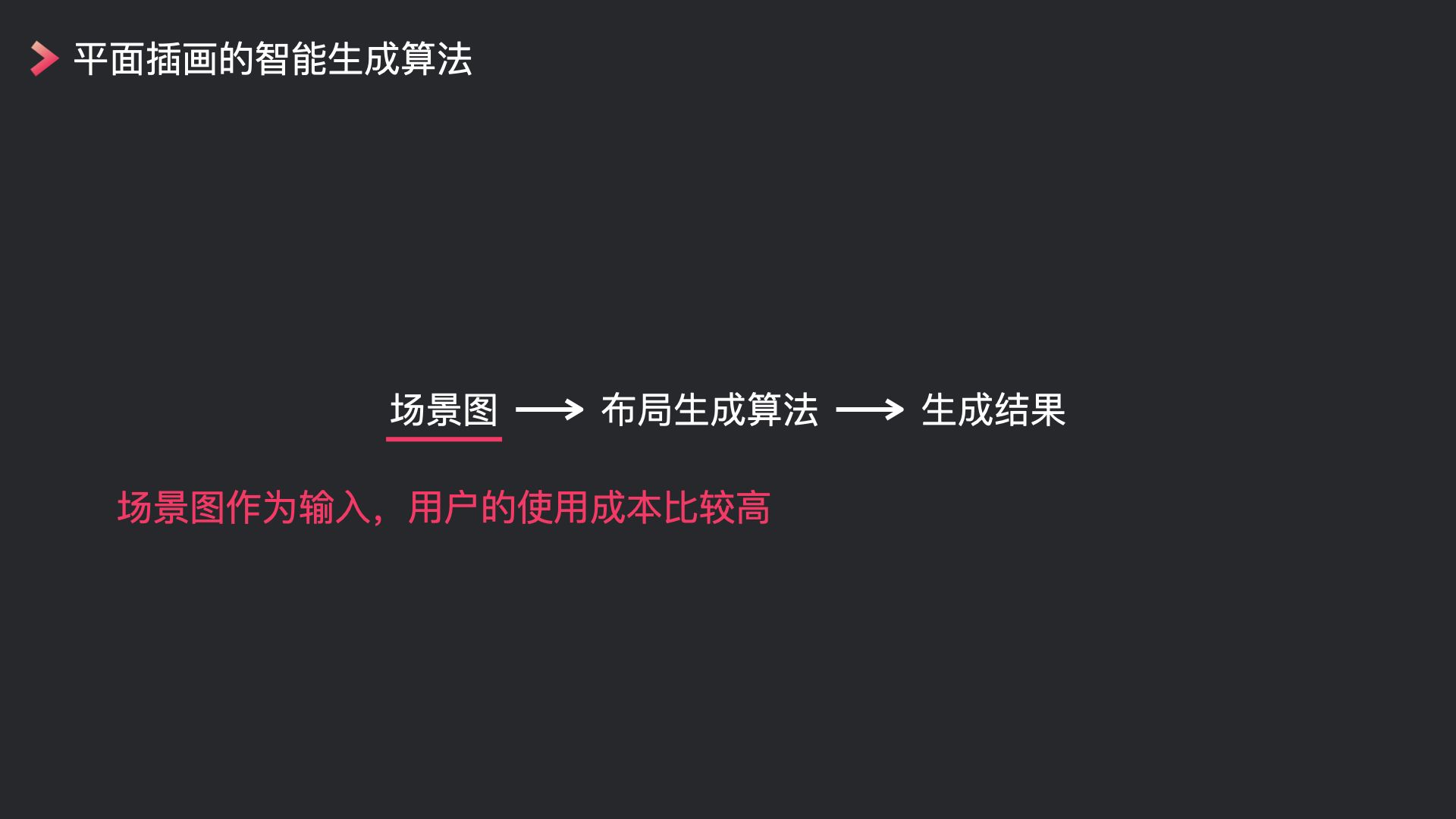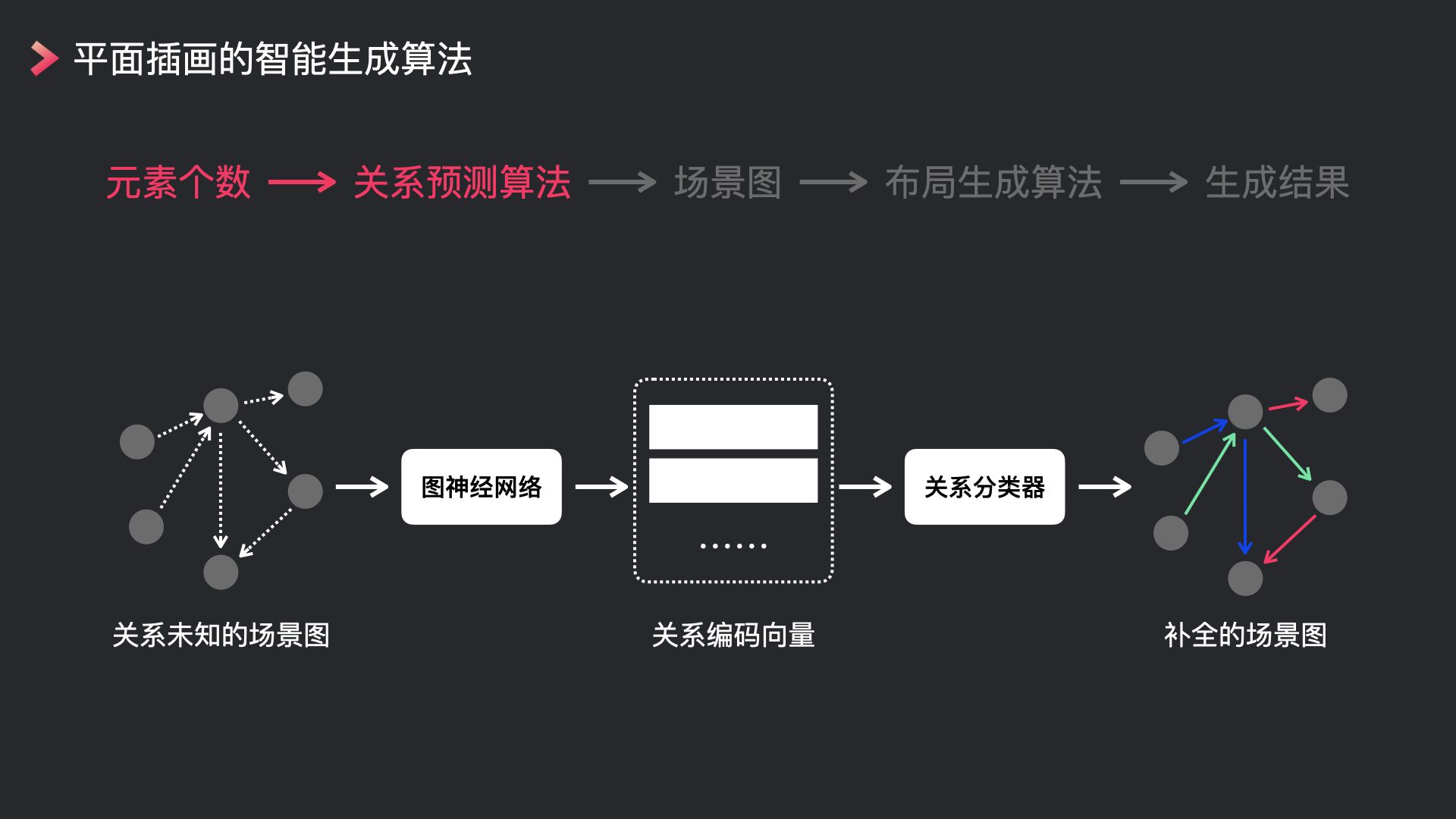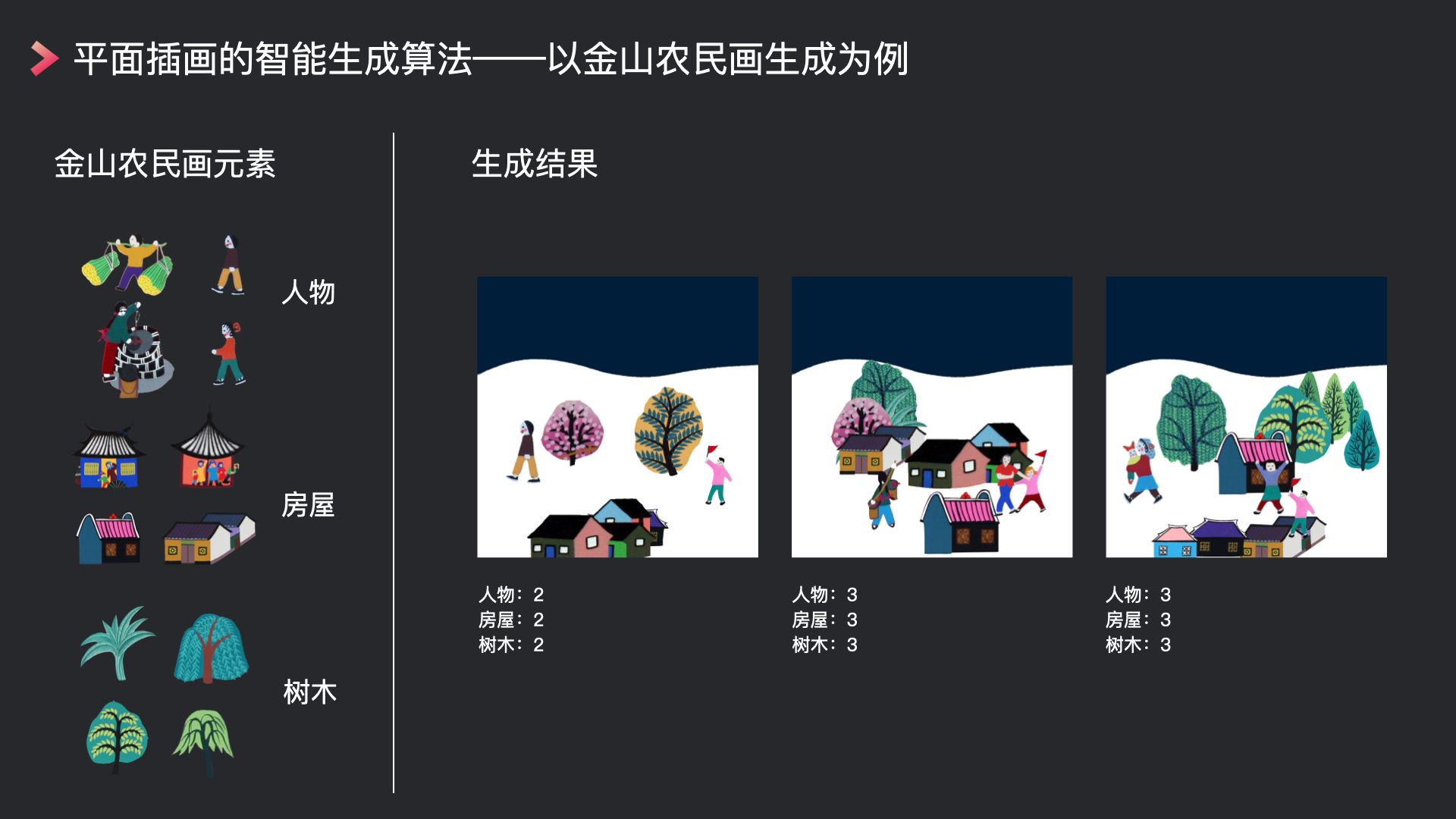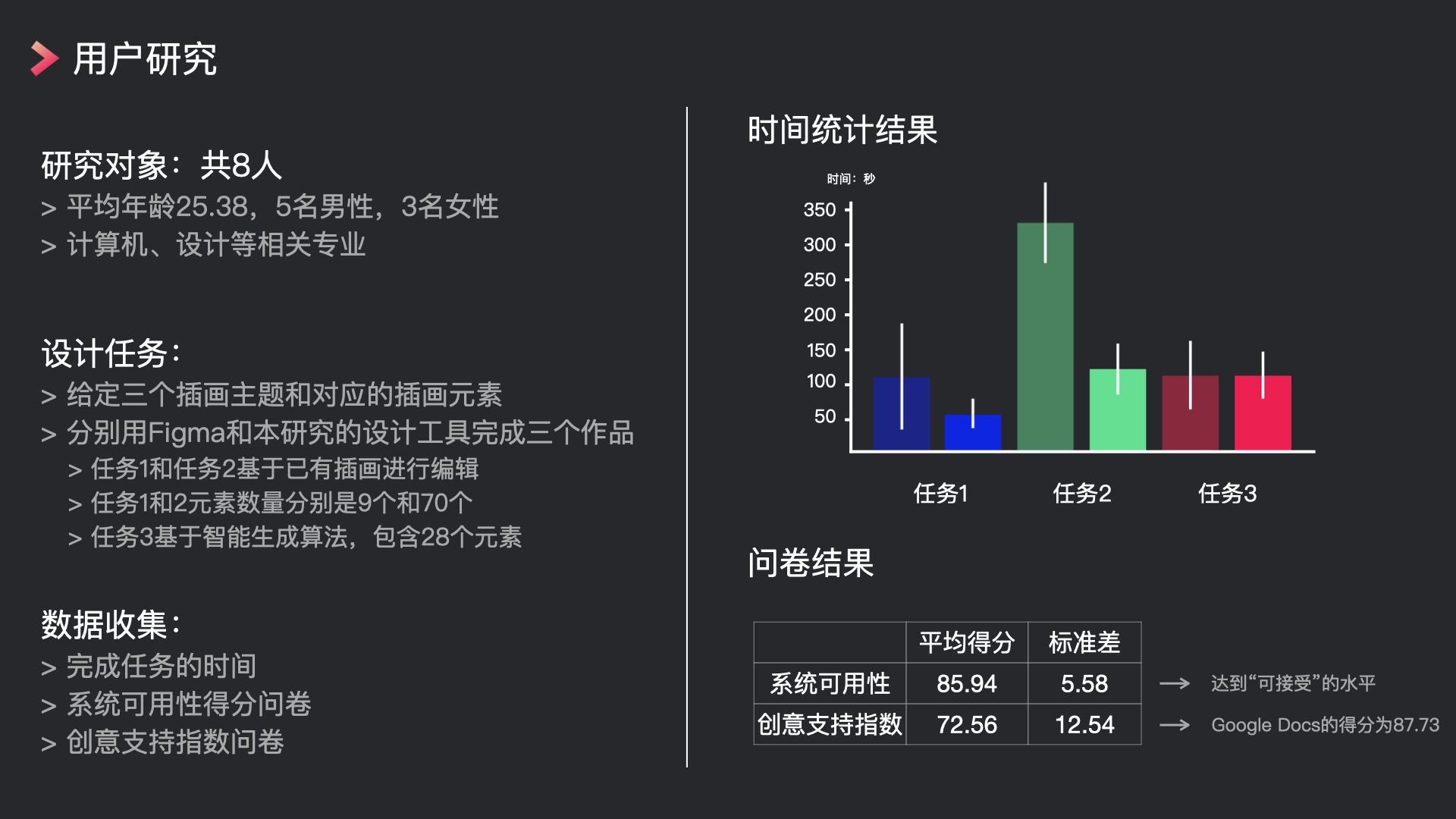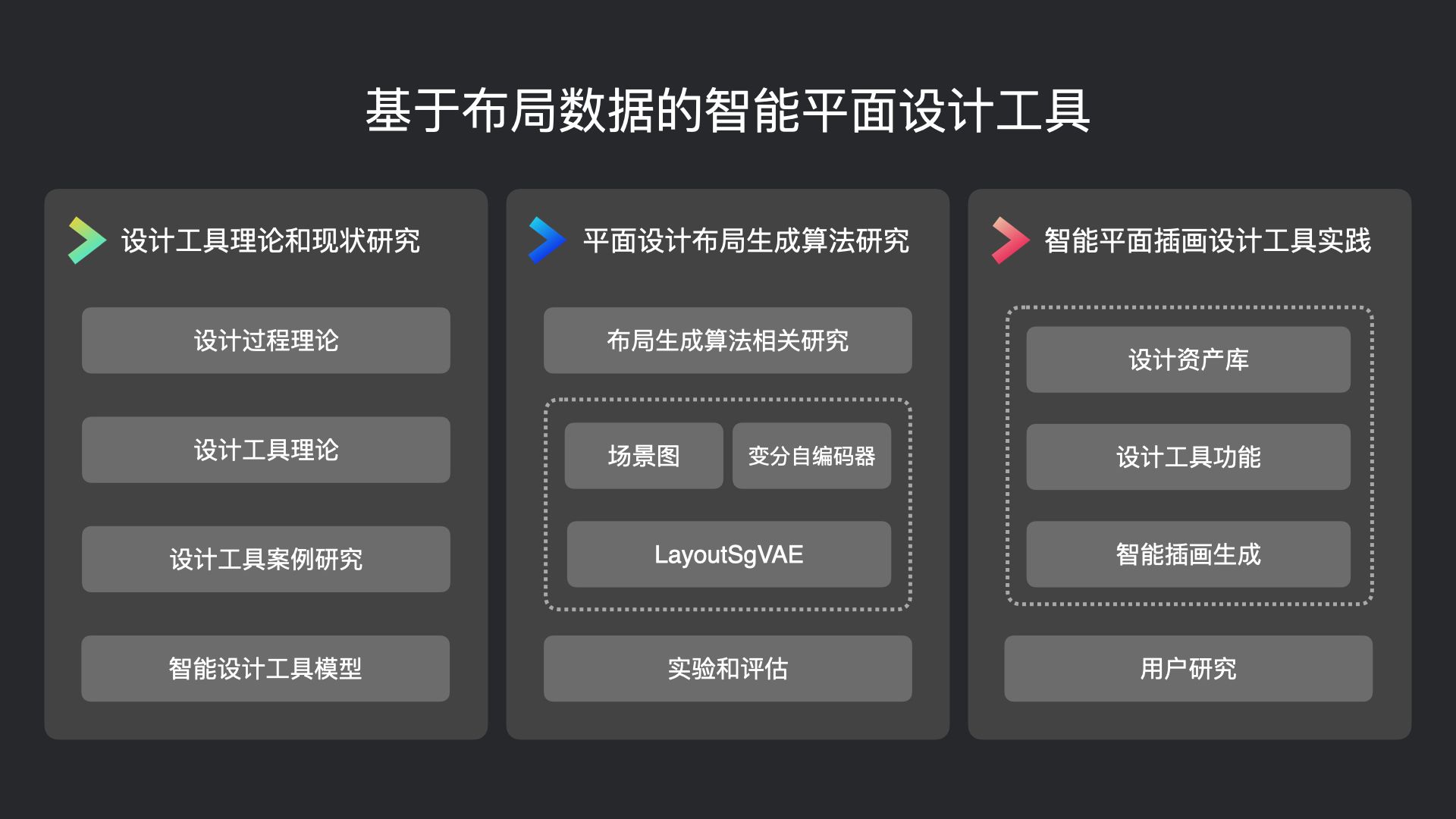
设计的数字化可以追溯到设计工具的数字化,同理可知,人工智能与设计的结合,也从设计工具开始。人工智能已经影响了设计师的思维方式,但由于智能设计工具的缺失,整个设计行业还难以走向智能化。因此,要解决人工智能与设计结合的问题,就需要先解决构建智能设计工具的问题。现在智能设计工具的一般模式仍然是缺乏的:一方面,是因为基于深度学习的人工智能技术主要在解决通用问题,并不能直接用于构建智能设计工具;另一方面,也是因为构建设计工具还不存在通用解决方案。
本研究尝试解决如何构建智能平面设计工具的问题,包括以下三个方面的贡献: 1. 本研究基于设计工具的相关理论和现状,提出了设计工具模型。本研究首先分析了设计过程理论和设计工具理论,随后结合真实案例研究,探讨了设计工具的特点,最终提出了设计工具模型。 2. 本研究将应用场景聚焦在平面设计布局上,对布局生成算法进行了研究。本研究基于已有布局生成算法进行了一定创新,在保证生成结果多样性的同时,提升了生成结果的质量,并通过定量和定性的实验证明了结果的有效性。 3. 本研究将设计工具的应用场景聚焦在平面插画上,基于上述理论研究构建了一个智能平面插画设计工具。本研究基于布局生成算法和设计工具模型,构建了一个智能平面插画设计工具,包括平面插画的设计资产库、基于元素替换的平面插画编辑功能,以及基于布局算法的平面插画生成功能。最后通过用户研究的方式,说明了工具的价值,也验证了布局生成算法和设计工具模型的有效性。
关键词:设计工具,人工智能,平面设计,布局生成,平面插画
The digitization of design can be traced back to the digitization of design tools, and by the same token, the combination of artificial intelligence and design also starts from the design tools. Artificial intelligence has influenced the behavior of designers, however, the whole design industry has not gone intelligent due to the lack of intelligent design tools. Therefore, to solve the problem of combining artificial intelligence and design, the method of building intelligent design tools should be considered first. There is still a lack of a general model for intelligent design tools. On the one hand, artificial intelligence techniques based on deep learning in recent years are mainly solving general problems and cannot be applied to build intelligent design tools directly. On the other hand, there is no universal solution for building design tools yet.
Based on these insights, this study attempts to address the problem of how to build intelligent graphic design tools. The contribution of this study is three-fold: 1. This study proposes a model of design tools. The theories of the design process and design tools are analyzed first. Then the design tools are discussed with real case studies. And the model of design tools is proposed according to previous case studies. 2. This study concentrates on the layout of graphic design, proposing a layout generation algorithm that guarantees the diversity and quality of generated layouts based on existing methods. Quantitative and qualitative experiments demonstrate that the generated layouts can be used as the initialization of graphic design. 3. An intelligent illustration design tool is built based on the above theoretical research. The design tool contains an asset library of illustration, replacement-based element editing, and layout-generation-based illustration generation. The user study demonstrates the value of this tool.
Key Words: design tool, artificial intelligence, graphic design, layout generation, illustration
